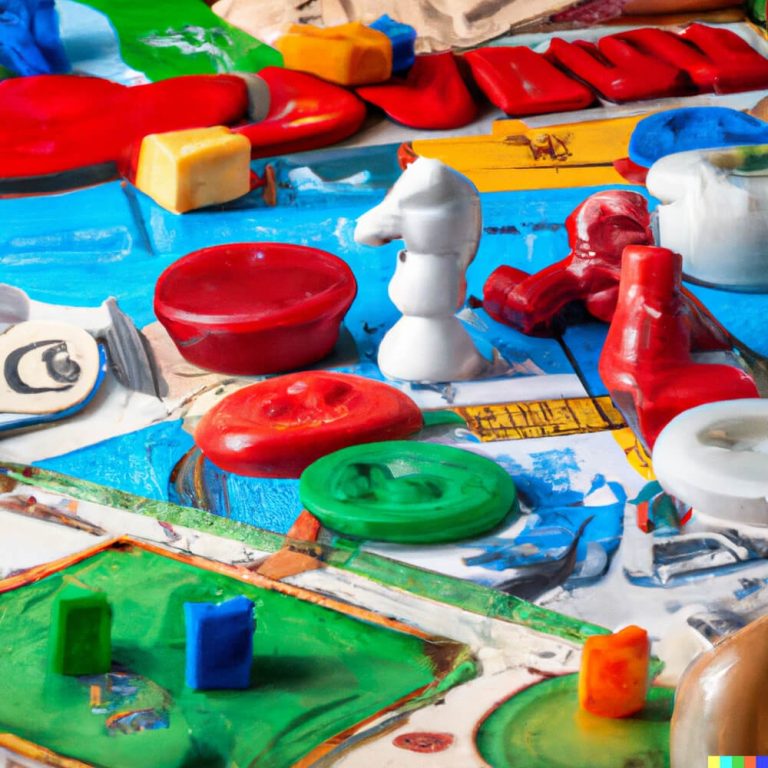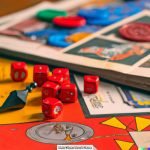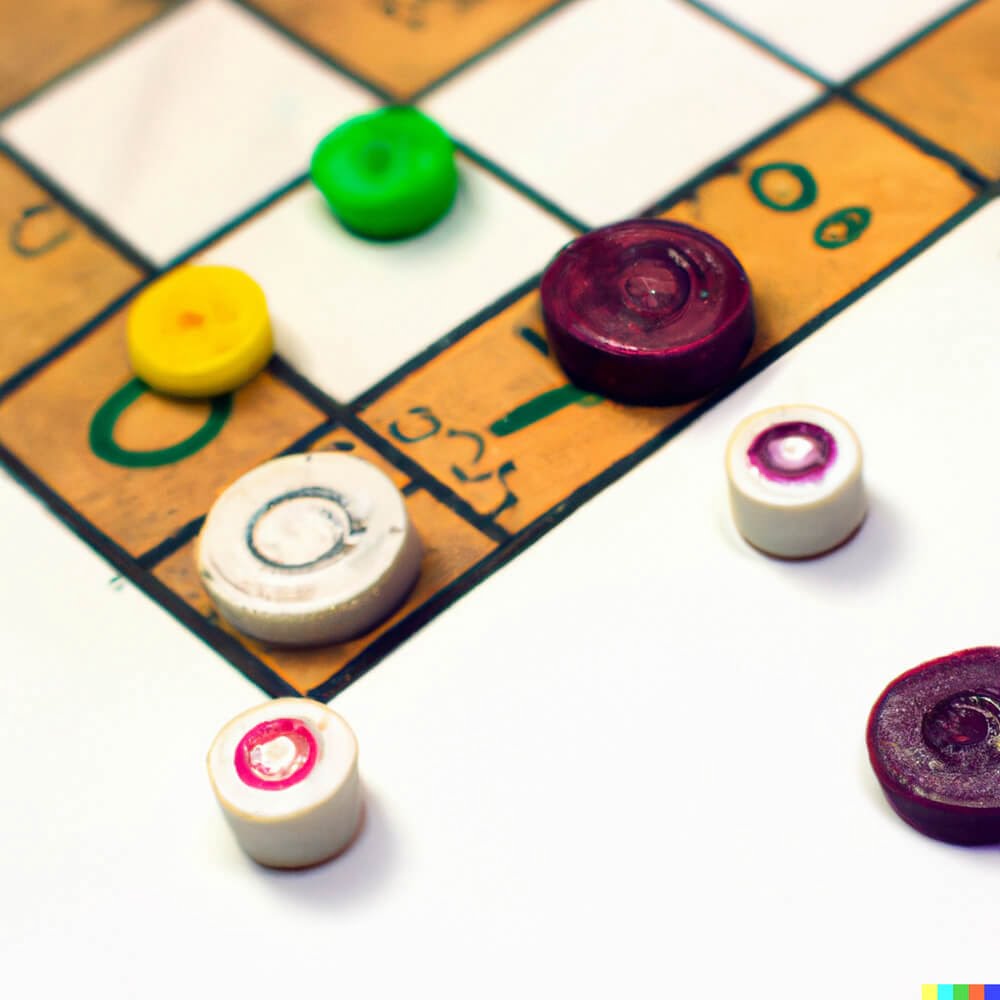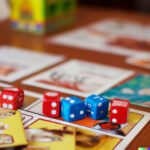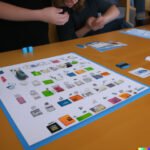Introduction to Chess
Chess is a classic game of strategy and tactics that has been around for thousands of years. It is believed to have originated in India sometime in the 6th century and was brought to Europe by the Moorish conquest. The game spread rapidly and eventually became a pastime favored by royalty. The modern setup of a chess board consists of 64 alternating black and white squares, with pieces placed on top as shown below. Each of the six different types of pieces (King, Queen, Bishop, Knight, Rook, and Pawn) has a distinctive way that it can move across the board. The goal of the game is to use these pieces to checkmate your opponent’s King – this is done when a player succeeds in trapping an opposing King so that they cannot escape capture even after all possible moves have been considered (for instance placing them in Check from which they cannot escape).
Components of a Chess Set
A traditional chess set consists of 32 playing pieces”16 dark-colored pieces, called “black”, and 16 light-colored pieces, called “white.” The board itself contains 64 alternating squares in two alternating shades of color, usually black and white. Each side of the board has 8 by 8 squares. These squares are typically referred to as “files” and “ranks”. A chessboard also contains two sets of labeling for the rows and files located around the outside frame of the board. These are known as “Algebraic Notation Dots” which represent each square on the board through making it easier for players to track their game moves and refer back to them later on if needed. Additionally, many chess boards have a special border around it where players can take note of their moves played throughout the game. All modern chess sets come with a special box or bag used to contain all 32 pieces in when not playing with them.
Setting Up a Chess Board
1. Position the chessboard so that each player has a white square in the bottom right-hand corner.
2. Place all the pawns on their starting squares, with a white pawn on each of the second row squares and black pawns placed on the seventh row squares.
3. Place the rooks in the corners, which should be of different colors ” a white rook should go in one corner and a black rook in its opposite corner.
4. The knights come next and should also be of different colors ” so place a white knight in one corner, and a black knight in its opposite corner from the rooks.
5. Place both bishops alongside the knights, being sure to have them on a different-colored square than their own color for gameplay purposes – one bishop should be on a white square, while one should be positioned on a black square.
6. Lastly, position the queen so she is of her own color (black queen starts out on black squares and vice versa) while positioning her directly next to her allied king located diagonally across from her ” which can be done by placing your fingers so that your index finger points at one square, with your middle finger pointing to another diagonal square across from it (which serves as where your queen will begin).
7. Finally, place your respective king piece onto his pre-determined starting space – making sure he is still placed cozily next to his queen who was already placed earlier!
Buyer’s Guide
When it comes to choosing the right chess game board set, there are many different types available on the market. Depending on preference, each type of board and pieces offers something unique and special to those who love the game.
Chess game boards typically come in various sizes, all determined by the number of squares on them. Standard tournament-style sets tend to be smaller and have 64 squares (8×8). Traditional boards typically measure around 20 inches or greater in length and width. Although these are both convenient for playing at home or traveling with, an even larger board is needed for clubs or big events when larger pieces are being used that require more space.
When it comes to buying new pieces for a chess game board set up, there are different materials available such as plastic, metal, wood, and ivory materials which provide varying aesthetics along with different styles ranging from traditional to modern designs. Many players prefer weighted pieces because they can make it easier to move them around the board while others just like how sleek and modern-looking they are. It’s ultimately up to personal preference what design appeals most when selecting a piece set for your chess game board set up.
Chess timer systems might also be of interest depending on the level of competition involved when playing; this will also add an extra layer of complexity for players looking for a challenge. Whether an analog clock face style or digital one offering multiple options like alarms and pre-set countdown options, a timer system is great if you want to keep track of everyone’s turn times so that matches don’t drag out too long.
Tips for Successful Setup
Before playing a game of chess, the board and pieces must be set up according to the traditional rules of the game. Here are some tips to ensure that the board is arranged properly before beginning a game of chess:
1) Make sure the board is placed on a flat surface. Position it so that one player has a light square in the bottom right corner.
2) Begin by arranging each player’s pieces in two rows facing each other on either side of the board. The pawns should be placed in the second row, while all other pieces should be placed in their respective place on the first row.
3) Set up your king and queen correctly. Place your king on its designated color’s square (for example: black king on black square). Then put your queen directly next to your king, but make sure it’s positioned on its color-corresponding square as well.
4) Put your knight and bishop pieces beside your queen, also with each piece taking their designated color squares as positions. Nobles come next – rooks followed by knights and bishops – covering both colors of squares for further protection for pieces already placed. Pawns are placed last; making sure each individual pawn sits within their designated column or file – set up in an orderly front line.
5) Finally, check all positions for correctness according to specific rules regarding color combination placements & orientations. Once you are satisfied that everything is correct; you can now start playing! Attention to detail will help ensure that games run smoothly without any issues!
DIY Board Setup
A chess game board set up is an important part of the game, and it can be a lot of fun to create your own. Here are some key considerations when designing and setting up a custom board.
1. Choose a High Quality Material: It’s important to use high quality materials for your board, as this will ensure that your pieces move smoothly over the squares. You can buy wooden, glass, or even metal boards. Whichever you go with, make sure that the material you choose is polished and has no cracks or scratches where the pieces could get stuck.
2. Layout Design: Once you have chosen the material for your board, you’ll need to decide how to lay it out. The most common layouts feature a traditional 8×8 grid pattern (with alternating black and white squares). You can also experiment with different patterns or use symbols in place of squares representing different chess pieces.
3. Setting Up Your Pieces: Chess pieces come in different sizes and styles but they should stay in correct positions on the board- kings on opposing sides, rooks beside the king at opposite corners, bishops beside those rooks in between them and so on-for any game setup to be valid as per FIDE rules of play. There are numerous options available when it comes to purchasing pieces such as wood sets with plastic figurines on top or complete marble sets where each piece is carved from one block of stone. Finding what you like best depends largely on personal preference more than anything else but just know that whatever piece style suits you best should definitely play well together within your custom laid out board design!
Finishing Touch
Once you have your chess board set up with its pieces, you may find that you want to add something special to make it stand out from the rest. Here are some ideas for decorations that will quickly and easily dress-up your game board:
1. Add a personalized touch – Use a sticker or permanent marker to write your initials in one section of the board, or offer to personalize it as a gift for someone else.
2. Get creative with the colors – Instead of traditional black and white color schemes, why not try something whimsical such as pink and yellow? Or contrast light hues like lime green against gold or bronze? You can even incorporate different shades of blue into each side of the board.
3. Colorful accents – You can add pieces of felt material in various colors on top of or along the edges of the chessboard. This brings a playful touch while also making sure pieces don’t roll off during playtime!
4. Upcycle old pieces – If you have any extra beads, buttons, small stones, or other trinkets lying around your home, glue them onto corners and sides of the board to give it more texture and style.
5. Bonus points for personalization – If you’re feeling extra creative and want to really customize your game board set up, try adding some embellishments such as decoupage artwork with modge podge gluing technique (for an old-fashioned printing press look) or paint an abstract design on top using colored acrylics! Not only will this be unique but also visually pleasing!
Storage Solutions
When it comes to storing a chess game board set up, there are both best practices and creative storage options that can be taken into consideration. To ensure the longevity of the game board and pieces, it is important to keep them in a cool, dry area, away from direct sunlight and moisture that could cause discoloration or warping. It is also important to keep the pieces organized. A designated compartmentalized box can be used for each player’s pieces as well as extra pieces when playing advanced variations of the game.
Creatively storing chess sets can be done in a variety of ways. Display cases with glass top lids can display the pieces while protecting them from dust or accidental damage when not in use. Bookshelf compartments specially designed for displaying board games can provide accessible storage for larger sets with additional components such as pawns, dice, and other accessories. Folding boards with attached pockets can make travel easier by keeping all components together when not in use. Finally, not applicable to everyone but suitable if available – wooden chests decorated with personal designs can offer rustic charm and secure storage space for collections of chess sets.
Conclusion
The chess board is composed of 64 alternating light and dark squares. Eight rows (horizontally) and eight columns (vertically) form the grid pattern. Two players face each other with 16 pieces from each side – one lighter color (typically white) and one darker color (typically black). The two sides are referred to as “white” and “black,” respectively. As explained in historical scribes, the origin of this arrangement dates back to the time of Charlemagne in 800 AD.
In conclusion, the traditional chessboard set-up involves a 64-square grid of alternating light and dark squares, with two players opposite one another and each controlling 16 pieces ” white pieces on one side and black pieces on the other. This arrangement can be traced back to 800 AD when it began appearing in manuscripts from Europe, mainly attributed to Charlemagne.

I love playing all kinds of games – from classics like Monopoly to modern favourites like Ticket to Ride.
I created this blog as a way to share my love of board games with others, and provide information on the latest releases and news in the industry.

